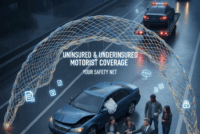Let’s realize it. We’ve all been there. You drive the house after a long day and cut yourself without using a signal. Your hands tease the wheel a little. Maybe you lukewarm a bit under your breath. Maybe you also honor. This is a common reaction. But what happens when these daily frustrations become big? Something that can hurt someone?
This is an aggressive driving. It’s not just about being in a hurry or a bad day. It’s about eliminating disappointment and letting the right behavior behind the wheel. This is a problem that affects us all, even though we do not think we are part of it. And if we don’t talk about it, it just gets spoiled.
Aggressive driving is more than just sharp or shouting at another driver. It is a pattern of insecure behavior that can put life at risk. It appears in many forms: tailgating, weaving through traffic, changing the streets to others, running red lights and using your car to scare someone. This is not just dangerous – it’s deadly.
Let’s dig on why people drive aggressively. There are a few reasons. It’s stress. When people are under pressure, they lose patience. The car becomes a place where they feel under control, so they pull out anger there. Another reason is time. We are always in a crowd. Late at work. Late at school. Late to a meeting. Some drivers feel that if they push the boundaries – they do interaction, drive light or force themselves through traffic – they can save a few minutes. But in fact, they put themselves and others at risk in the few minutes.
Then there’s something deeper. A feeling of anonymity. Inside a car, people feel invisible. They’re less likely to think about the consequences of their actions. They wouldn’t act this way face-to-face, but behind a windshield, things are different. That false sense of distance makes it easier for tempers to flare.
Aggressive driving is also fueled by competition. The road becomes a race. Someone passes you, and it feels personal. You want to pass them back. They cut you off, and now it’s your mission to “teach them a lesson.” That mindset can escalate quickly. Suddenly, two people who were just trying to get somewhere are now in a silent, dangerous battle for control.
But the thing here is that aggressive driving does not just affect the driver. This affects everyone around them. This is not just a person’s day. This is a wave effect. When a driver tailored, the person in front of nervous. They can use brakes suddenly. This can cause an accident. When someone moves through a red light, they can kill a pedestrian or a cyclist. An aggressive step can change life in seconds.
And this is not rare. It happens all the time. Think about how many times you see that drivers weave in and outside the streets constantly respect or refuse to merge someone. It has become so normal that many still do not notice it. But just because it is common for it not to be safe. It actually makes it more dangerous because people become emotionless to risk.
It is also a matter of pride. People don’t want to respect the way. So when another driver does something rude or uncertain, it looks like an attack. That can cause revenge behavior. An aggressive step leads to another. And before you know it, two drivers increase the speed, swing and put life at risk on something that was probably not five minutes ago.
Aggressive driving is often mistaken for Road Raj, but they are not exactly the same. The rage of the road occurs when aggressive driving turns into violence. This can mean getting out of the car to cope with someone, or even use a weapon. This is an extreme version. But it usually starts with aggressive driving. This is why it is so important to stop it before you go away.
Now let’s talk about the effect. The number is not a lie. Every year, thousands of people are injured or killed in accidents that include aggressive driving. This is one of the main causes of traffic accidents. And this is not just for other injured drivers. Passengers, pedestrians and cyclists are also at risk. Kids in the back seat. Someone crossing the street. A person walking their dog. Aggressive driving doesn’t care who it hurts.
Insurance companies know this too. If you’re caught driving aggressively, your rates go up. You could lose your license. You could even end up in jail. So it’s not just a moment of anger—it’s something that can have long-lasting consequences.
And there is another thing to think here: aggressive driving does not work either. You may think you save time with sharp or cut. But most of the time you just end the same red light. The risk you have not found quickly – it makes the way more dangerous for everyone.
So what can we do with it? First, we must be honest with ourselves. Everyone has moments of despair. Everyone has called a bad conversation behind the wheel. But it is the first step to identify. When we accept it, we can start changing it.
It also helps in further planning. Give yourself extra time to go where you are going. If you are not in a crowd, you are less likely to be upset. And if someone else is running aggressively, don’t party. Let them go. This is not a race. This is not worth your safety.
Hearing music or podcast can help you stay calm. Dark breath. Take care of your driving. The little things can make a big difference. And if you often find yourself angry while driving, it may be time to see what’s going on in your life. Maybe there is tension that should be handled outside the car.
Teaching new drivers about this is also key. When young people learn to drive, they should also learn about emotional control. It’s not just about using turn signals and checking mirrors. It’s about staying calm, even when other drivers don’t.
We also need to support better road designs. Some roads just bring out the worst in drivers. Poor signs. Bad lighting. Confusing exits. All these things make people more frustrated. Cities can do their part by making roads safer and easier to navigate.
Law enforcement plays a role too. When drivers know that aggressive behavior has consequences, they’re less likely to do it. But this isn’t just about tickets and fines. It’s about creating a culture where safety comes first.
At the end of the day, driving is a shared activity. You’re not alone out there. Every time you get in a car, you’re part of a big system. Your actions affect others. Their actions affect you. We all want to get home safely. We all want to protect our families. That starts with how we act behind the wheel.
So the next time someone cuts you off, take a breath. The next time you’re running late, remember that arriving alive is more important than arriving on time. And if you see someone driving aggressively, don’t let them drag you into it. Stay focused. Stay calm. Drive like the lives around you depend on it—because they do.
Aggressive driving isn’t just a bad habit. It’s a real danger. But it’s one we can fight together. Not with more anger, but with more patience, more awareness, and more care for the people sharing the road with us.





